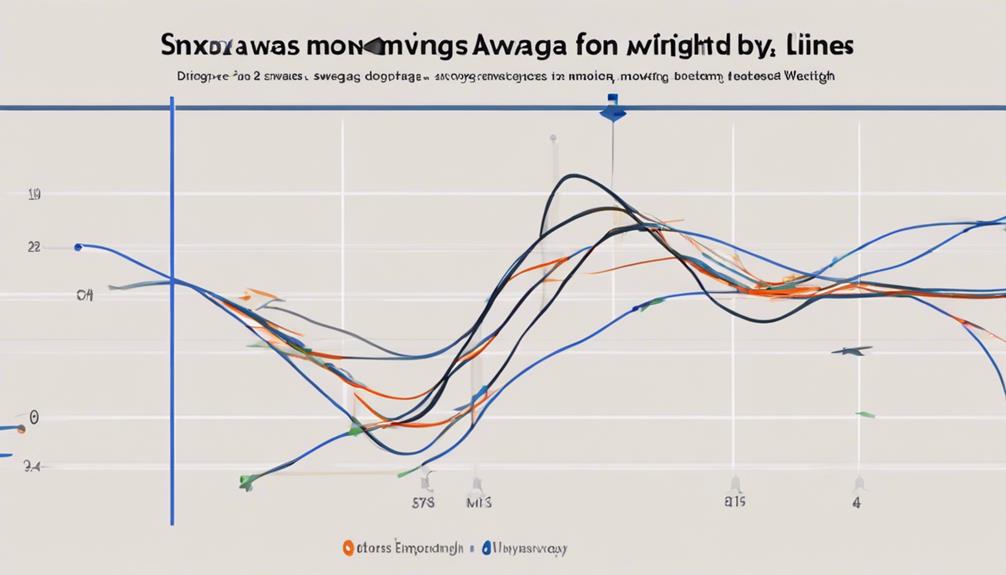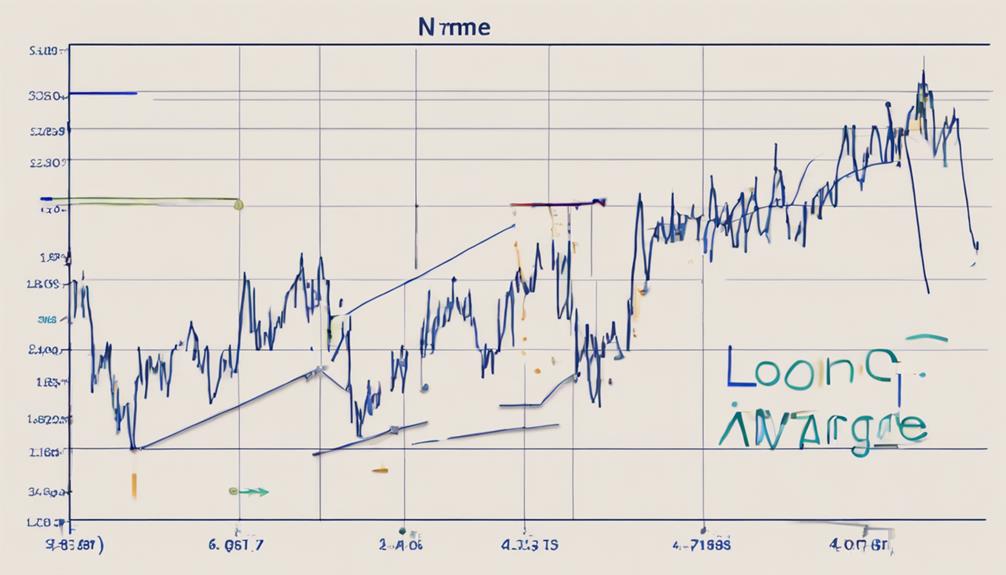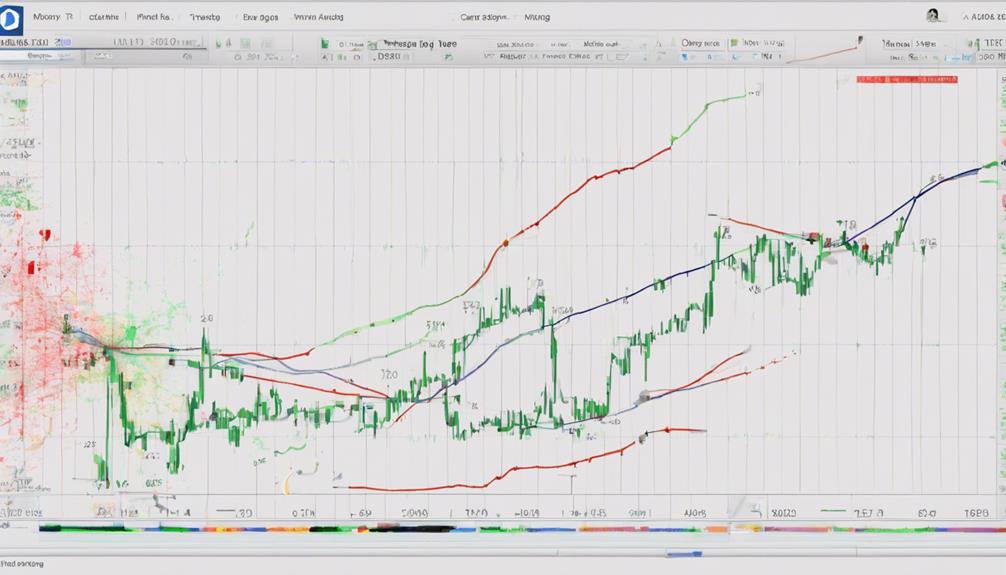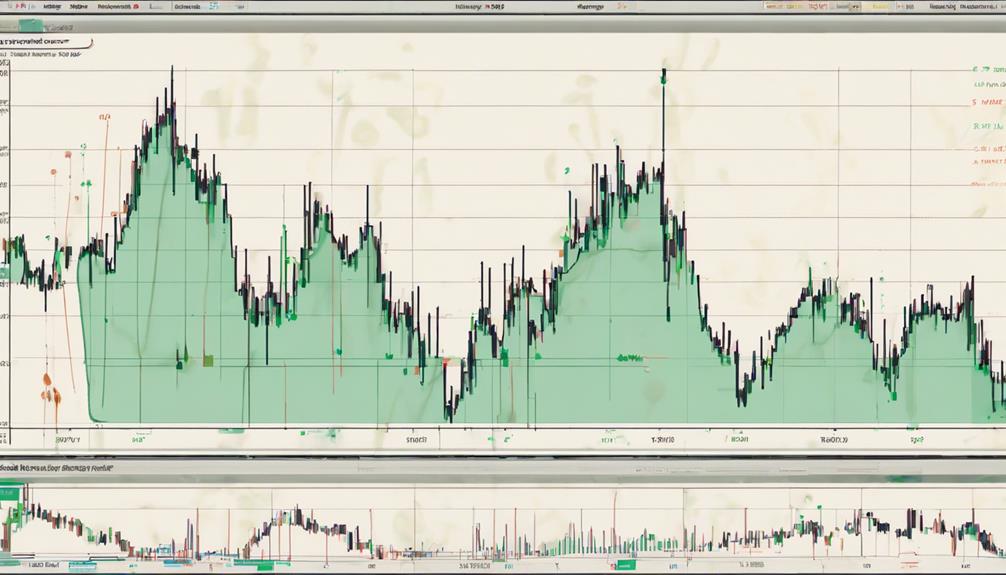Picture this: a calm sea with gentle ripples, guiding your path through uncertain waters. Moving averages serve as your navigational tool in the vast ocean of financial markets, offering clarity and direction amidst the fluctuations.
But why should you harness their power effectively? Let's explore how mastering moving averages can be the key to unlocking hidden patterns and opportunities in your trading journey.
Benefits of Using Moving Averages
By consistently utilizing moving averages in your analysis, you can effectively enhance your ability to identify trends and make informed trading decisions. Moving averages, such as the Exponential Moving Average (EMA) or longer-term moving averages, play a crucial role in smoothing out price fluctuations. They act as dynamic support and resistance levels, aiding in determining optimal entry and exit points for trades.
Incorporating moving averages into your trading strategy provides a clearer picture of asset movements based on historical price data. This data-driven approach can significantly improve your trading strategies and enhance risk management by helping you make well-informed decisions. Utilizing moving averages can give you a competitive edge in the market by providing a structured framework for analyzing trends efficiently.
Types of Moving Averages to Consider

To broaden your understanding of moving averages, it's essential to consider various types that can offer distinct advantages in analyzing price movements effectively.
Simple Moving Averages (SMA) provide equal-weighted price averaging over a specific period, while Exponential Moving Averages (EMA) react faster to price changes by assigning more weight to recent data.
Weighted Moving Averages (WMA) offer a customized approach by assigning different weights to data points. These moving averages can be adapted to different timeframes for trend analysis.
Combining different types of moving averages can give you a comprehensive view of price trends and help identify potential entry/exit points in the market. Consider the unique benefits each type offers when analyzing price movements.
Importance of Choosing the Right Length

Choosing the appropriate length for a moving average is a critical decision that significantly influences its effectiveness in analyzing price movements. When deciding on the moving average length, consider the sensitivity to price changes, align it with your trading goals, and adapt it to market conditions and asset volatility.
The optimal length varies for short-term traders seeking quick signals versus those focusing on long-term trends. Selecting the right moving average length is crucial for accurate trend analysis and decision-making, as it affects the signals' responsiveness and smoothness.
Strategies for Effective Moving Average Utilization

Utilizing moving averages effectively in trading strategies requires a deep understanding of how different lengths respond to price changes and the ability to select the most suitable one aligned with your specific trading objectives.
For swing traders, incorporating moving average crosses like the Golden Cross (bullish signal) and Death Cross (bearish signal) can be beneficial for identifying potential entry and exit points. These crosses can also act as dynamic support and resistance levels, aiding in decision-making processes.
How Can Utilizing Moving Averages Improve My Trading Strategy?
By utilizing a stepbystep moving averages tutorial, you can improve your trading strategy significantly. Moving averages can help smooth out short-term fluctuations in stock prices, making it easier to identify trends. They can also signal potential buy or sell opportunities based on crossovers and trend strength.
Understanding Moving Average Limitations

Moving averages, despite their utility in trend analysis, possess inherent limitations that traders must acknowledge and navigate. When considering the use of moving averages, it's crucial to understand their constraints to make informed trading decisions:
- They're a lagging indicator, reflecting past price data.
- Market conditions may not always adhere to moving average support or resistance levels.
- Choppy or sideways price action can result in false signals when relying solely on moving averages.
- Moving averages are most effective in trending market conditions rather than in choppy or ranging markets.
Remember to adjust the time frame of moving averages to mitigate some of these limitations and enhance their effectiveness in your trading strategies.
How Can I Apply Moving Averages in Real-Life Situations Effectively?
When it comes to applying moving averages in real-life situations, practical moving averages case studies can provide valuable insights. By examining how moving averages have been effectively used in various scenarios, individuals can gain a better understanding of how to utilize this tool in their own decision-making processes.
Frequently Asked Questions
Why Should We Use Moving Average?
When trading, you should use moving averages to smooth price fluctuations, identify trends, and determine dynamic support/resistance levels. They provide a clear visual of price movements, helping filter market noise for better decision-making.
What Is the Main Benefit of Simple Moving Average?
The main benefit of a simple moving average is its ability to smooth out price fluctuations, offering a clear indication of the market's overall direction. Traders rely on its simplicity and effectiveness for trend identification.
How Do You Use Moving Average Effectively?
To use moving averages effectively, you calculate the average price of a security over a specific period. This helps smooth out price fluctuations and reveals trends. By interpreting crossovers and slope changes, you can make informed trading decisions.
What Is the Main Advantage of Using Moving Average in the Time Series Analysis?
In time series analysis, the main advantage of using moving averages is their ability to capture and visualize trend direction over a specified period. They help in trend identification, dynamic support, and resistance levels.
Conclusion
In conclusion, mastering moving averages means maximizing market insights. By blending SMA and EMA, selecting suitable lengths, and strategizing smartly, you can seize opportunities and sidestep risks.
Remember, moving averages are a reliable tool, but not foolproof. So, stay vigilant, verify trends, and validate signals. With persistence and precision, your profits will proliferate.


